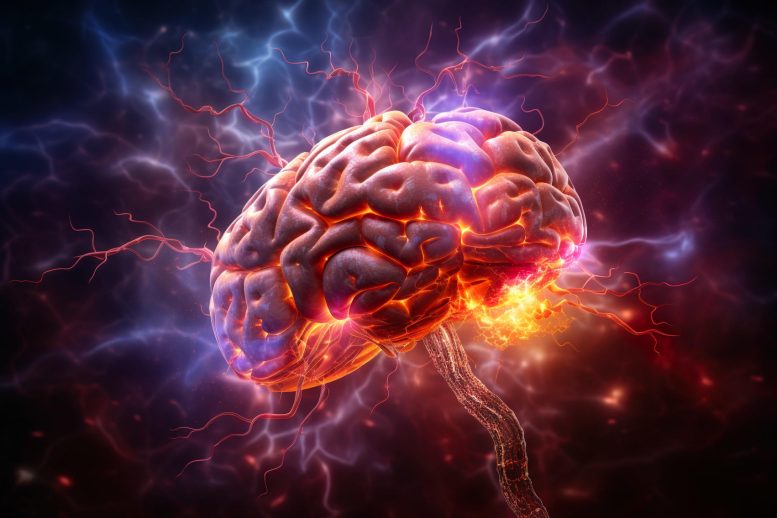
Researchers have found that cortical gray matter thinning is an early biomarker of dementia, detectable 5-10 years before symptoms. Their study, using MRI brain imaging on diverse cohorts, shows this biomarker’s potential in predicting dementia risk, aiding in early intervention and therapeutic development.
Researchers aim to incorporate an MRI biomarker into dementia risk stratification for patient care and clinical trials.
Cortical gray matter, a type of brain tissue, becomes thinner in individuals who later develop dementia. This change has been identified by researchers at The University of Texas Health Science Center at San Antonio (UT Health San Antonio) as a reliable biomarker of the disease, detectable five to ten years before the onset of symptoms.
The researchers, working with colleagues from the University of California, Davis, and Boston University, conducted an MRI brain imaging study published in Alzheimer’s & Dementia: The Journal of the Alzheimer’s Association. They studied 1,000 Massachusetts participants in the Framingham Heart Study and 500 people from a California cohort. The California volunteers included 44% representation of Black and Hispanic participants, whereas the Massachusetts cohort was predominantly non-Hispanic white. Both cohorts were 70 to 74 years of age on average at the time of MRI studies.
“The big interest in this paper is that, if we can replicate it in additional samples, cortical gray matter thickness will be a marker we can use to identify people at high risk of dementia,” said study lead author Claudia Satizabal, Ph.D., of UT Health San Antonio’s Glenn Biggs Institute for Alzheimer’s and Neurodegenerative Diseases. “By detecting the disease early, we are in a better time window for therapeutic interventions and lifestyle modifications, and to do better tracking of brain health to decrease individuals’ progression to dementia.”
Repeating the Framingham findings in the more-diverse California cohort “gives us confidence that our results are robust,” Satizabal said.
Sifting MRIs for a pattern
While dementias can affect different brain regions, Alzheimer’s disease and frontotemporal dementia impact the cortex, and Alzheimer’s is the most common type of dementia.
The study compared participants with and without dementia at the time of MRI. “We went back and examined the brain MRIs done 10 years earlier, and then we mixed them up to see if we could discern a pattern that reliably distinguished those who later developed dementia from those who did not,” said co-author Sudha Seshadri, MD, director of the Glenn Biggs Institute at UT Health San Antonio and senior investigator with the Framingham Heart Study.
“This kind of study is only possible when you have longitudinal follow-up over many years as we did at Framingham and as we are building in San Antonio,” Seshadri said. “The people who had the research MRI scans while they were well and kept coming back to be studied are the selfless heroes who make such valuable discoveries, such prediction tools possible.”
The results were consistent across populations. Thicker ribbons correlated with better outcomes and thinner ribbons with worse, in general. “Although more studies are needed to validate this biomarker, we’re off to a good start,” Satizabal said. “The relationship between thinning and dementia risk behaved the same way in different races and ethnic groups.”
Applications
Clinical trial researchers could use the thinning biomarker to minimize cost by selecting participants who haven’t yet developed any disease but are on track for it, Seshadri said. They would be at greatest need to try investigational medications, she said.
The biomarker would also be useful to develop and evaluate therapeutics, Seshadri noted.
Future directions
Satizabal said the team plans to explore risk factors that may be related to the thinning. These include cardiovascular risk factors, diet, genetics, and exposure to environmental pollutants, she said.
“We looked at APOE4, which is a main genetic factor related to dementia, and it was not related to gray matter thickness at all,” Satizabal said. “We think this is good, because if thickness is not genetically determined, then there are modifiable factors such as diet and exercise that can influence it.”
Derived in clinical MRIs
Could the MRI gray matter biomarker be used widely someday?
“A high proportion of people going to the neurologist get their MRI done, so this thickness value might be something that a neuroradiologist derives,” Seshadri said. “A person’s gray matter thickness might be analyzed as a percentile of the thickness of healthy people for that age.”
Reference: “A novel neuroimaging signature for ADRD risk stratification in the community” by Claudia L. Satizabal, Alexa S. Beiser, Evan Fletcher, Sudha Seshadri and Charles DeCarli, 26 December 2023, Alzheimer’s & Dementia.
DOI: 10.1002/alz.13600
National Institutes of Health/National Institute on Aging funding for Alzheimer’s Disease Research Centers (ADRCs) at The University of Texas Health Science Center at San Antonio; The University of California, Davis; and Boston University School of Medicine supported this study.









Be the first to comment on "Early Dementia Warning – Thinning of Brain Region May Signal Risk up to 10 Years Before Symptoms"